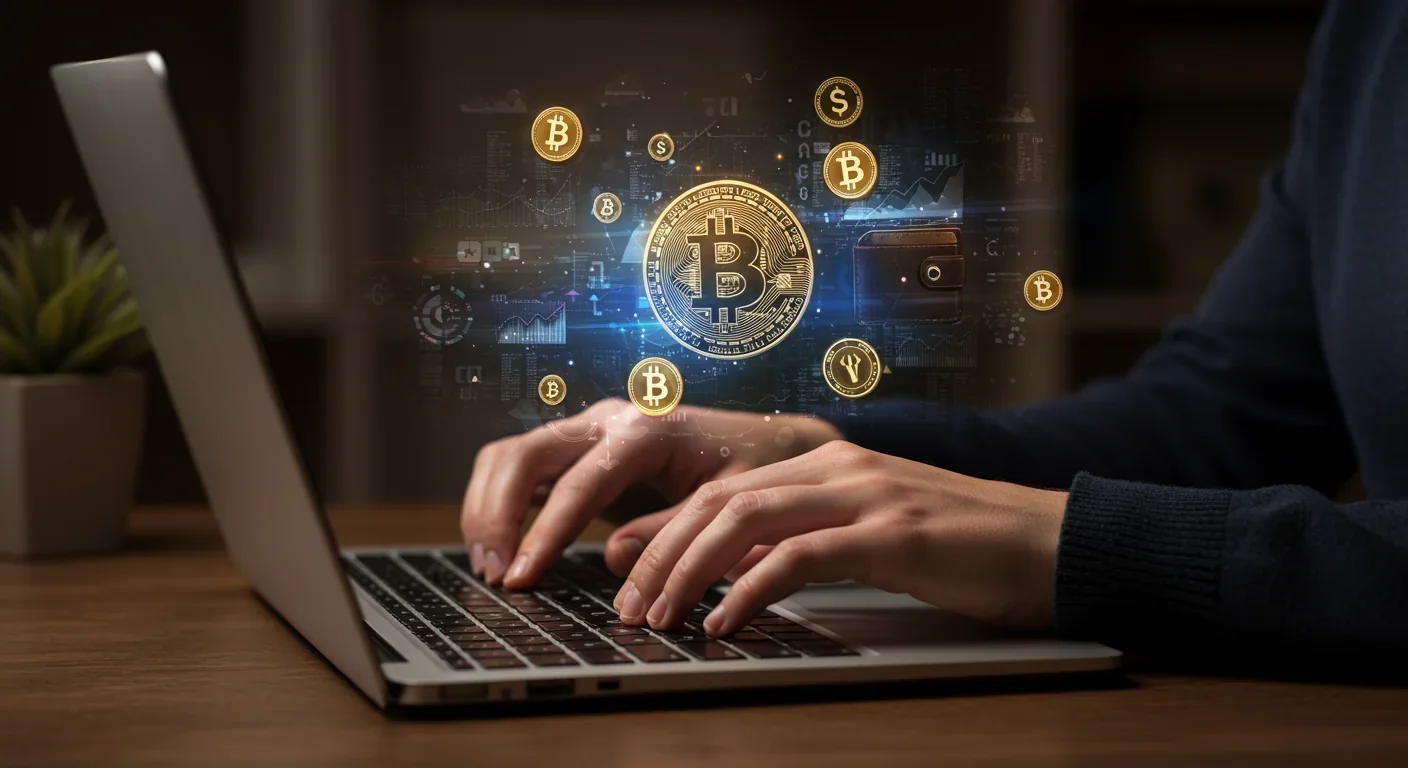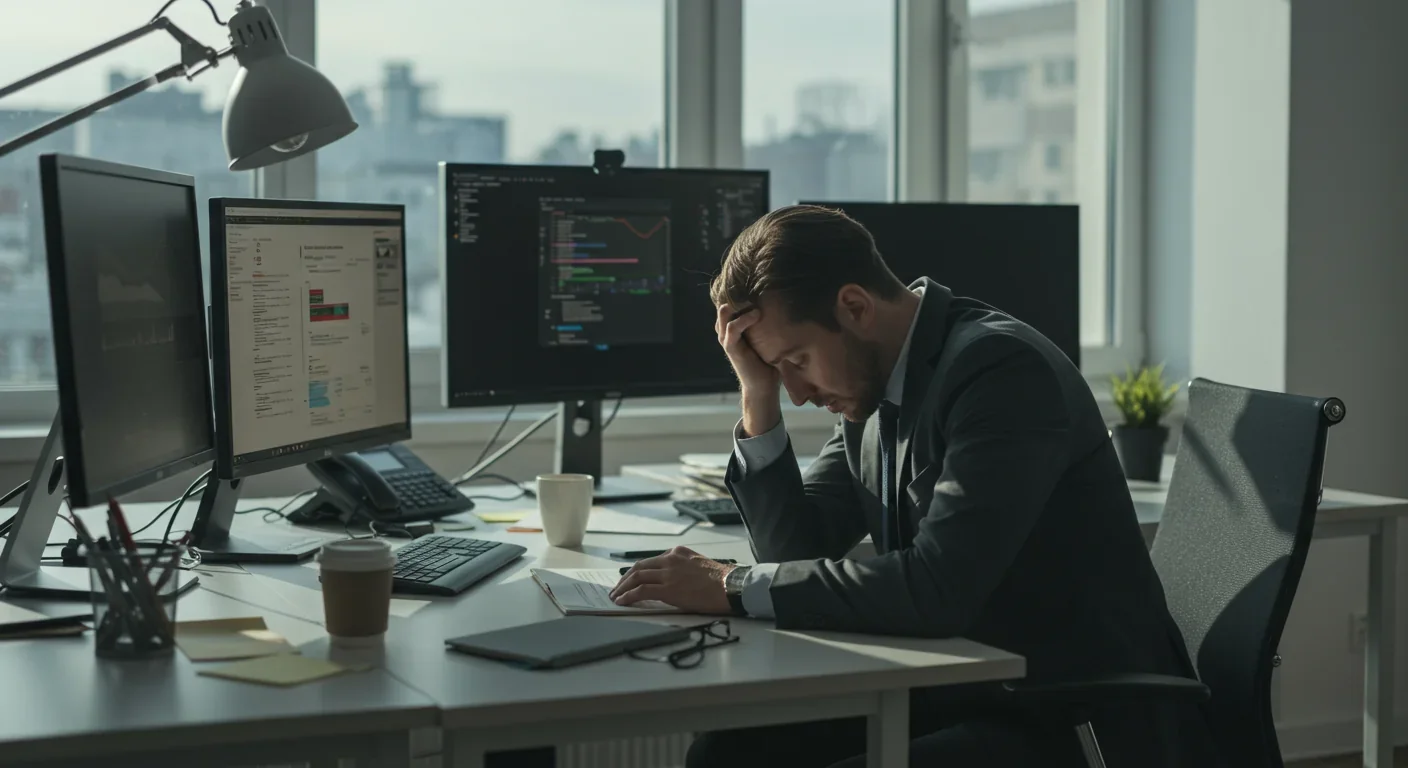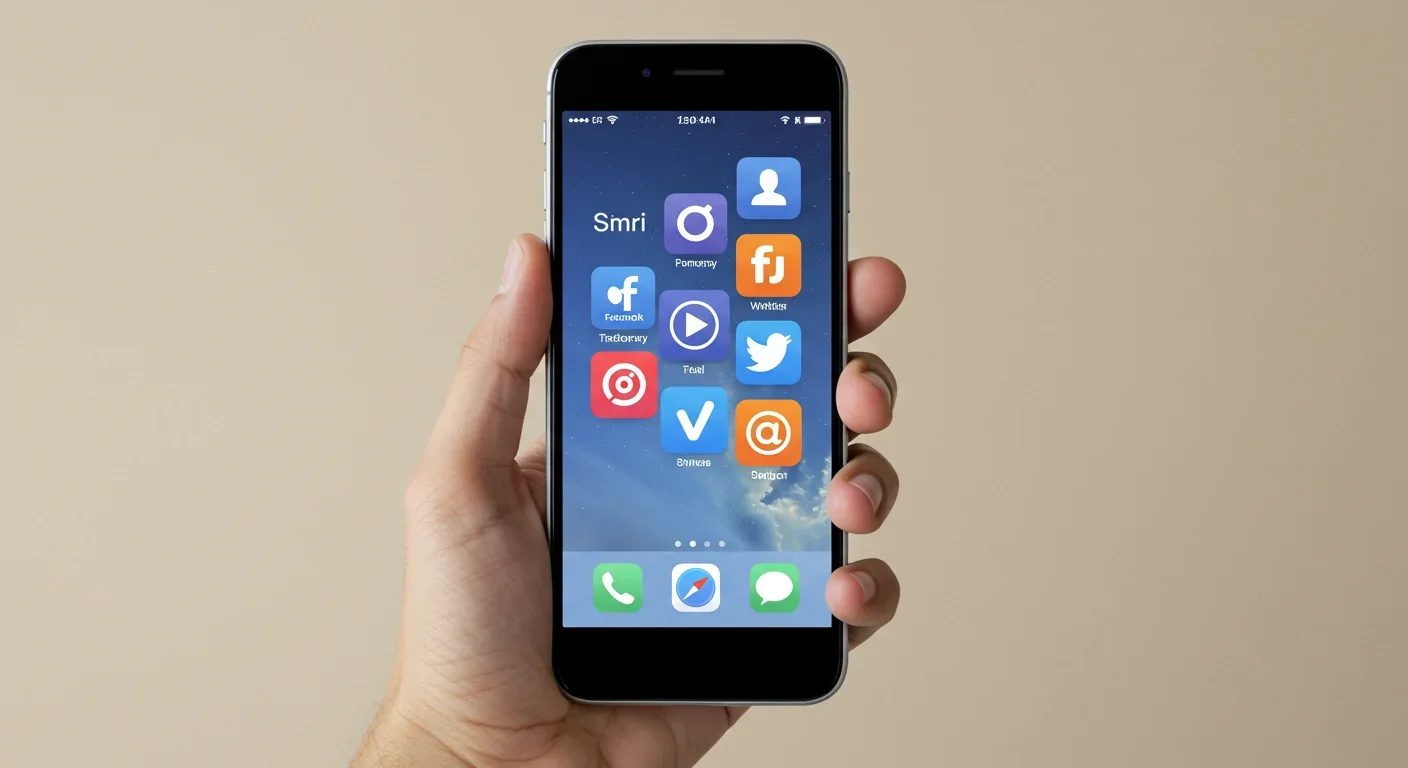Crypto in Authoritarian States: Freedom or Evasion Tool?

TL;DR: The burnout economy reveals a productivity paradox: our culture of relentless work is destroying both human well-being and economic performance, costing companies up to $20,683 per executive annually while 80% of employees face burnout risk.

By 2030, the World Health Organization predicts chronic workplace stress will be the leading driver of disease burden globally. We're not just facing a mental health crisis—we're living through an economic paradox where our obsession with productivity is systematically destroying the very thing it promises to create: value.
Over 80% of employees are at risk of burnout right now, with Gen Z workers feeling the squeeze most acutely. But here's what's shocking: we've built an entire economic system that runs on burnout, and it's costing us far more than we're gaining.
The math doesn't add up. Companies lose between $3,999 per hourly worker to $20,683 per executive annually due to burnout. Multiply that across industries, and you're looking at losses that dwarf most line items on any corporate balance sheet.
Yet the hustle continues. In the UK, workers receive 153 Teams messages and 117 emails daily, with both figures jumping over 15% year-on-year. We've created a treadmill that speeds up every quarter, and nobody seems willing to hit the emergency stop button.
The irony cuts deep. A Journal of Occupational Health study found that burnout risk doubles when employees move from 40 to 60 hours weekly. Meanwhile, 60% of Americans live paycheck to paycheck, and 44% view their side hustle as financially essential. We're working ourselves into the ground to stay afloat, which makes us less productive, which pressures us to work even harder.
It's a doom loop with a business model.
Let's talk real numbers. The WHO reported 745,000 deaths in a single year from stroke and heart disease linked to overworking. That's not a mental health statistic—that's a body count.
But even if we set aside the human toll and speak the language of spreadsheets, burnout hemorrhages money. Presenteeism—showing up but checking out mentally—costs far more than absenteeism for U.S. workers with chronic conditions. You're paying for eight hours and getting maybe three hours of actual output.
The cost structure varies wildly by role. Burnout runs companies 0.2 to 2.9 times the average health insurance cost and 3.3 to 17.1 times training costs per employee. For executives, we're talking $20,683 per person annually. That's not overhead—that's organizational decay with a price tag.
And here's the kicker: 61% of workers across all industries cite mental health as the primary reason they left their last job. You can't retain talent when your workplace culture is actively destroying their health.
There's a dangerous blind spot in corporate leadership. Employees report a 69% burnout risk while employers estimate only 45%. That 24-point gap isn't just a communication failure—it's a measurement failure that prevents intervention.
If leadership can't see the fire, they won't call the fire department. They'll keep piling on more logs.
Remote work was supposed to fix this. Instead, remote workers face a 20% higher burnout risk than on-site employees. Why? Because over 70% of employees have work communications on their phones, making them 84% more likely to work after hours. The office followed us home, and it never sleeps.
The "always-on" culture isn't a bug—it's a feature. Digital presenteeism means employees work long hours or weekends just to catch up, creating a feedback loop of exhaustion and declining output. We mistake visibility for productivity and penalize people for having boundaries.

Burnout doesn't distribute evenly. Young employees report burnout rates of 81% for ages 18-24 and 83% for ages 25-34, compared to just 49% for workers 55 and older. This isn't because millennials and Gen Z are weak—it's because they're entering a labor market that's fundamentally more precarious than the one their parents knew.
Consider the financial pressure. 44% of U.S. employees can't cover a $1,000 medical emergency, and 52% feel anxious about uncovered healthcare costs. When asked to estimate the out-of-pocket cost for a year of cancer treatment, 72% of employees guessed under $2,000. The actual average is nearly $600 monthly for new diagnoses.
Financial stress compounds workplace stress. You can't compartmentalize when you're one illness away from bankruptcy. The hustle becomes mandatory, not aspirational.
This isn't how work has always been. The eight-hour workday was a hard-won labor victory a century ago, built on the radical premise that people need time to rest, think, and live. Somewhere along the way, we traded that clarity for the fiction that busyness equals value.
The shift accelerated with digital technology. Email promised efficiency; instead, it created an expectation of instant response. Smartphones promised flexibility; instead, they obliterated the boundary between work and life. Slack and Teams promised better collaboration; instead, they weaponized interruption.
We're the first generation in human history expected to be simultaneously contactable and productive 24/7. The Industrial Revolution gave us the factory whistle; the Digital Revolution gave us the phantom vibration. Neither was good for humans, but at least you could leave the factory.
The WHO's ICD-11 classifies burnout as an occupational phenomenon, not a medical disorder—a crucial distinction. This isn't about individual pathology; it's about systemic design. You don't treat burnout with individual therapy any more than you treat black lung with cough drops.
Burnout has three validated dimensions: emotional exhaustion, depersonalization (cynicism about work), and reduced personal accomplishment. It's not just feeling tired. It's the collapse of your capacity to care, combined with a gnawing sense that nothing you do matters.
Sweden codified a specific ICD-11 code for exhaustion disorder in 2005 and built treatment programs around it. They recognized early that burnout is an occupational injury, not a character flaw. Most countries still haven't caught up.
K-12 education is the canary in the coal mine. Teachers have the highest burnout rate in the U.S., and the gap between K-12 and other industries has nearly doubled since the pandemic—expanding from an 8-point difference (36% vs. 28%) in March 2020 to a 14-point difference (44% vs. 30%) now.
Teachers with less than five years of experience show particularly elevated burnout rates. We're losing talent at the front end, draining institutional knowledge, and creating a self-perpetuating crisis where burned-out teachers can't effectively mentor new ones.
Healthcare, social services, and tech follow close behind. The common thread? High cognitive load, emotional labor, and systemic underinvestment in support infrastructure. These industries demand everything and provide minimal scaffolding to sustain the humans doing the work.
Here's the hopeful part—we know what works, and it's not yoga sessions or mindfulness apps. Those are fine, but they're individual Band-Aids on systemic wounds.
Four-day workweeks. Multiple trials show that workers report less burnout and better sleep without productivity drops. Companies that implemented this saw employees actually get more done in less time because focus improves when you're not chronically exhausted.
Digital sunset policies. One organization that implemented a formal end to work communications saw reported stress levels decrease by 28%. Turns out people recover when you let them.
Flexible schedules with zero core hours. Buffer's experiment with fully flexible scheduling led to a 25% reduction in reported stress. Autonomy isn't a perk—it's a necessity for sustainable performance.
Workload redistribution. 64% of workers report they can choose their work intensity, but that stat should be 100%. When employees have genuine control over pace and priorities, burnout drops significantly.
These aren't theoretical. They're proven interventions that companies could implement tomorrow if leadership prioritized long-term sustainability over short-term extraction.

Individual companies can't solve this alone because burnout is baked into how we've structured capitalism. We need policy interventions that change the rules of the game.
Mandatory paid time off. Over 60% of Americans left paid time off unused in 2024. It's not that people don't want rest—it's that workplace culture punishes taking it. Mandatory minimums with use-it-or-lose-it provisions shift the cultural norm.
Right to disconnect legislation. France did it. Portugal did it. The U.S. can too. Legal protections that prevent after-hours work contact except in genuine emergencies give workers enforceable boundaries.
Redefining full-time work. The 40-hour week was arbitrary when we created it, and it's increasingly misaligned with how knowledge work actually functions. Experiments with 32-hour weeks show equivalent or better output with dramatically improved well-being.
Healthcare decoupling. The fact that 52% of workers feel anxious about healthcare costs while employed means our system is broken. Burnout and financial stress are inseparable when health coverage depends on a job that's destroying your health.
Europe generally approaches work-life balance as a collective good rather than individual privilege. Post-pandemic surveys show workers worldwide increasingly prioritize work-life balance over pay, but policy support varies wildly by region.
Asian economies face their own versions of this crisis. Japan has a word—karoshi, death from overwork—that they've been tracking for decades. South Korea has some of the longest working hours in the OECD and corresponding mental health crises.
The Nordic countries consistently rank highest on work-life integration, not because their populations are fundamentally different but because their policy frameworks make sustainable work the path of least resistance. Strong unions, robust social safety nets, and cultural emphasis on collective well-being create guardrails that prevent the worst excesses of hustle culture.
Systemic change takes time. Individuals still need strategies to survive the present while we build a better future.
Set hard boundaries. Delete work apps from your phone if possible. If not possible, set do-not-disturb schedules and honor them. Every time you respond to a midnight email, you're training your organization to expect it.
Track your actual productivity. Most people discover they're genuinely productive for maybe 3-4 hours daily. Everything else is performance. Once you know that, you can stop pretending the other hours matter and focus on protecting your peak periods.
Use your PTO. All of it. Every year. Schedule it in advance so there's no last-minute scramble or guilt trip. Rest is not negotiable for long-term performance.
Talk about it. The perception gap between employees and employers exists partly because we don't name the problem. When you're burning out, say it. When you see colleagues burning out, name it. Silence protects dysfunctional systems.
Evaluate your organization honestly. If your workplace actively prevents healthy practices despite claiming to value well-being, that's information. Work-life balance now matters more than pay for most workers. You have options.
Here's the thing about economic paradoxes—they eventually resolve. Either we intentionally restructure work to be sustainable, or the system collapses under its own contradictions. Those are the options.
The burnout economy isn't an aberration. It's the logical endpoint of a productivity culture that treats humans as resources to be optimized rather than people to be sustained. We've spent decades asking "How much can we extract?" instead of "How can we thrive?"
The answer is emerging from unexpected places. Four-day workweek trials. Digital sunset policies. Companies that measure success by employee retention, not just revenue growth. These aren't utopian fantasies—they're practical interventions that deliver better outcomes by every meaningful metric.
What comes next depends on whether we're brave enough to admit that the emperor has no clothes. Productivity culture promised us prosperity; instead, it delivered exhaustion, inequality, and an economy running on fumes. The cost of changing course is high. The cost of continuing is catastrophic.
The burnout economy was built by human choices. It can be unmade the same way. The question isn't whether we can afford to change—it's whether we can afford not to.

Saturn's iconic rings are temporary, likely formed within the past 100 million years and will vanish in 100-300 million years. NASA's Cassini mission revealed their hidden complexity, ongoing dynamics, and the mysteries that still puzzle scientists.

Scientists are revolutionizing gut health by identifying 'keystone' bacteria—crucial microbes that hold entire microbial ecosystems together. By engineering and reintroducing these missing bacterial linchpins, researchers can transform dysfunctional microbiomes into healthy ones, opening new treatments for diseases from IBS to depression.

Marine permaculture—cultivating kelp forests using wave-powered pumps and floating platforms—could sequester carbon 20 times faster than terrestrial forests while creating millions of jobs, feeding coastal communities, and restoring ocean ecosystems. Despite kelp's $500 billion in annual ecosystem services, fewer than 2% of global kelp forests have high-level protection, and over half have vanished in 50 years. Real-world projects in Japan, Chile, the U.S., and Europe demonstrate economic via...

Our attraction to impractical partners stems from evolutionary signals, attachment patterns formed in childhood, and modern status pressures. Understanding these forces helps us make conscious choices aligned with long-term happiness rather than hardwired instincts.

Crows and other corvids bring gifts to humans who feed them, revealing sophisticated social intelligence comparable to primates. This reciprocal exchange behavior demonstrates theory of mind, facial recognition, and long-term memory.

Cryptocurrency has become a revolutionary tool empowering dissidents in authoritarian states to bypass financial surveillance and asset freezes, while simultaneously enabling sanctioned regimes to evade international pressure through parallel financial systems.

Blockchain-based social networks like Bluesky, Mastodon, and Lens Protocol are growing rapidly, offering user data ownership and censorship resistance. While they won't immediately replace Facebook or Twitter, their 51% annual growth rate and new economic models could force Big Tech to fundamentally change how social media works.